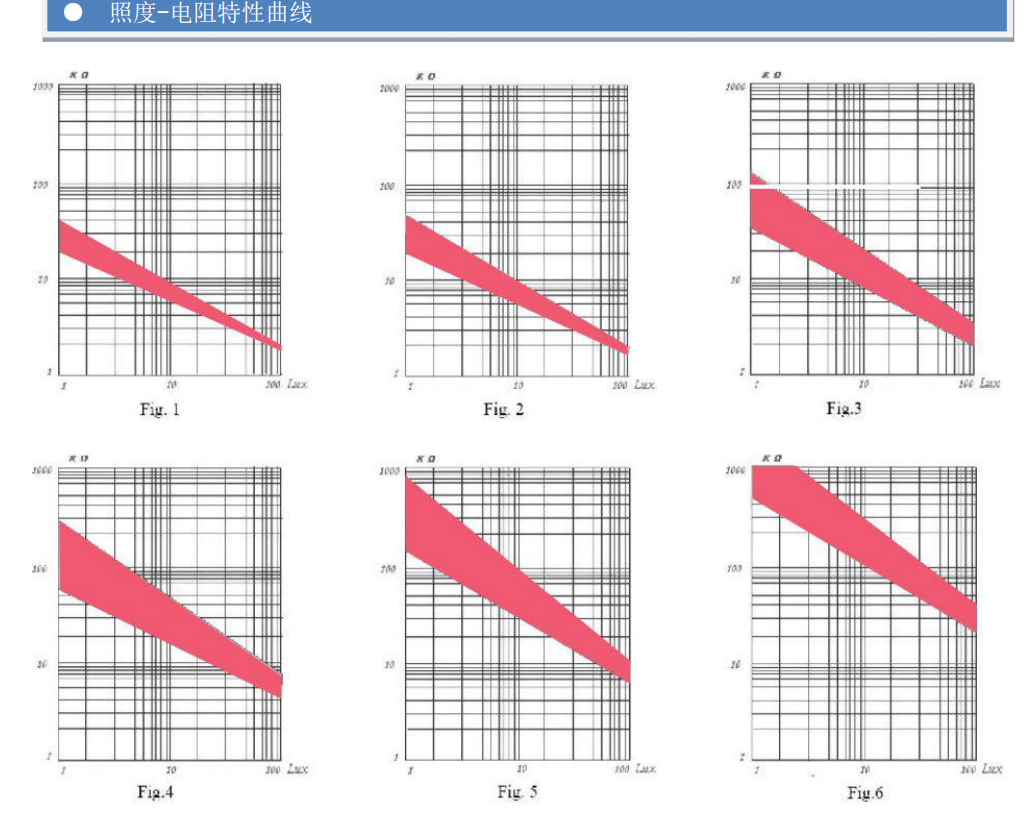

PROD Model:φ3
PROD Model:φ3
Maximum Applied Voltage: the maximum voltage that can be continuously applied to a component in the dark
Dark Resistance: resistance value at 10 seconds after 10Lux illumination is turned off
Maximum Power Consumption: maximum power consumption when the ambient temperature is 25 ° C
Bright Resistance: after 2 hours of exposure with 400-600Lux light, the
test value under 10Lux light of standard light source (color temperature
2856K)
γ Value: logarithm of the ratio of the standard resistance value at 10Lux illuminance to 100Lux illuminance
γ= Lg(R10/R100) /Lg (100/10) =Lg(R10/R100)
General Description
A photoresistor is a resistance made of a
semiconductor material whose conductivity changes with the change of
illuminance. This feature is used to make photoresistors of different
shapes and light-receiving areas. Photoresistors are widely used in
toys, lamps, cameras and other industries.
Features
Epoxy encapsulation
Good reliability
Small size
High sensitivity
Fast response
Good spectral characteristics
Technical Data

Applications
They have a very simple structure and they are low cost and rugged devices.They are widely used in many different items of electronic equipment including photographic light meters, fire or smoke alarms as well as burglar alarms, and they also find uses as lighting controls for street lamps.
FAQ
1. What is the size for LDR
φ3 series, φ4 series, φ5 series, φ7 series, φ10 series, φ12 series, φ20 series.
2. What is your production capitable
5 million Pieces per Month
3. Which of the photoresistor's will be the best to allow an led to only come on in complete darkness
It depends on the circuit you intend to use.

© Copyright Feiling Technical electron CO.,LTD.2007-2018. All rights reserved
未经允许.禁止抄袭.违者必究
